Tissues
1/18
There's no tags or description
Looks like no tags are added yet.
Name | Mastery | Learn | Test | Matching | Spaced |
|---|
No study sessions yet.
19 Terms
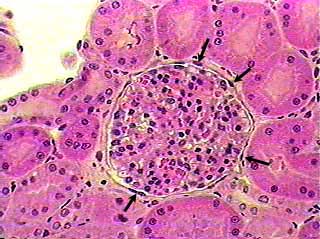
Simple Squamous Epithelium
Function: Allows passage of materials by diffusion and filtration in sites where protection is not important; secretes lubricating substances is serosae
Location: Kidney glomeruli; air sacs of lungs; lining of the heart, blood vessels and lymphatic vessels; lining of ventral body cavity (serosae)
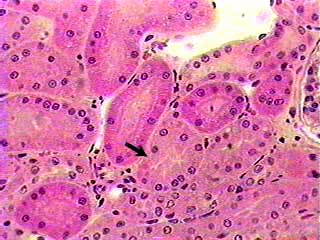
Simple cuboidal epithulium
Function: secretion and absorption
Location: kidney tubules; ducts and secretory portions of small glands; ovary surface
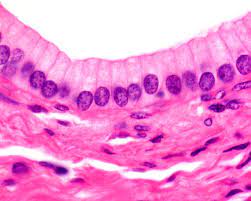
Simple columnar epithelium
Function: Absorption; secretion of mucus, enzymes, and other substances; ciliated type propels mucus (or reproductive cells) by ciliary action
Location: Nonciliated type lines most of the digestive tract (stomach to anal canal), gallbladder, and excretory ducts of some glands; ciliated variety lines small bronchi, uterine tubes, and some regions of the uterus
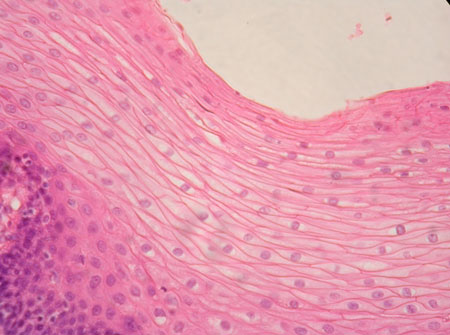
Stratified squamous epithelium
Function: Protects underlying tissues in areas subjected to abrasion
Location: Non-keratinized type form the moist linings of the esophagus, mouth, and vagina; keratinized variety forms the epidermis of the skin; a dry membrane
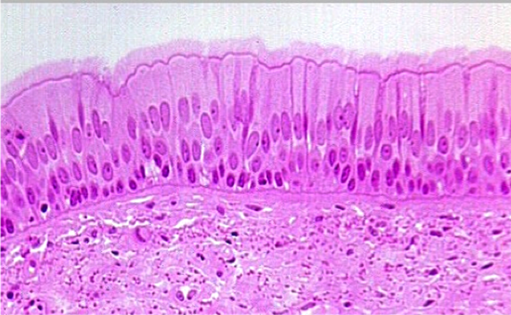
Pseudostratified columnar epithelium
Function: Secretion, particularly of mucus; propulsion of mucus by ciliary action
Location: Nonciliated type in male’s sperm-carrying ducts and ducts of large glands; ciliated variety lines the trachea, most of the upper respiratory tract
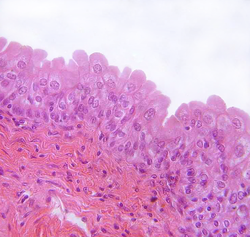
Transitional epithelium
Function: Stretches readily and permits distension of urinary organ by contained urine
Location: Lines the ureters, bladder, and part of the uterus
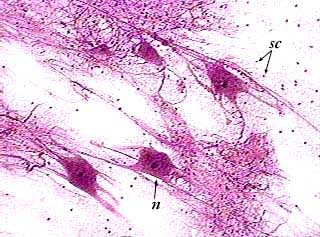
Nervous Tissue
Function: Transmit electrical signals from sensory receptors and to effectors (muscles and glands) which control their activity
Location: Brain, spinal cord, and nerves
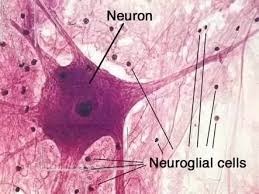
Neuroglia
Nervous system cells that support the neurons by cleaning them up, protecting and insulating them
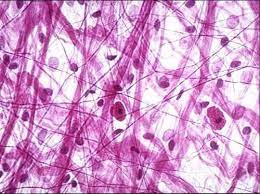
Loose connective tissue; areolar
Function: Wraps and cushions organs; its macrophages phagocytize bacteria; plays important role in inflammation; holds and conveys tissue fluid
Location: Widely distributed under epithelia of body, forms lamina propria of mucous membranes; packages organs; surrounds capillaries
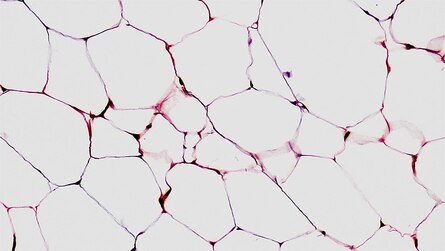
Loose connective tissue; adipose
Function: Provides reserve food fuel; insulates against heat loss; supports and protects organs
Location: under skin; around kidneys and eyeballs; within abdomen; in breasts

Loose connective tissue; reticular
Function: Fibers form a soft internal skeleton (stroma) that supports other cell types including white blood cells, mast cells, and macrophages
Location: Lymphoid organs (lymph nodes, bone marrow, and spleen)
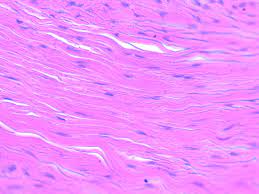
Dense connective tissue, dense regular
Function: Attaches muscles to bones or to muscles; attaches bones to bones; withstands great tensile stress when pulling force is applied in one direction
Location: Tendons, most ligaments, aponeuroses
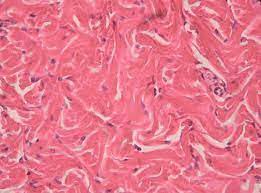
Dense connective tissue, dense irregular
Function: Able to withstand tension exerted in many directions; provides structural strength
Location: Dermis of the skin; submucosa of digestive tract; fibrous capsules of organs and of joints

Cartilage: hyaline
Function: Supports and reinforces; has resilient cushioning properties; resists compressive stress
Location: Forms most of the embryonic skeleton; covers the ends of long bones in joint cavities; forms costal cartilages of the ribs; cartilages of the nose, trachea, and larynx
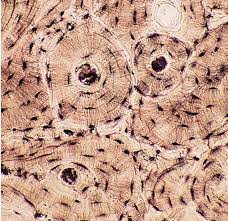
Bone (osseous tissue)
Function: Bone supports and protects (by enclosing); provides levers for the muscles to act on; stores calcium and other minerals and fat; marrow inside bones is the site for blood cell formation (hematopoiesis)
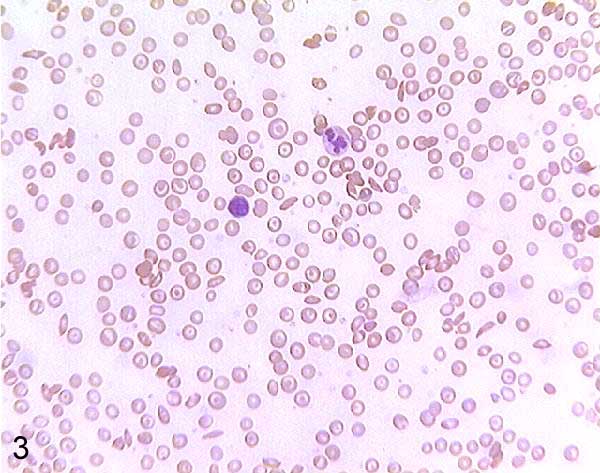
Blood
Function: Transport of respiratory gases, nutrients, wastes, and other substances
Location: Contained within blood vessels
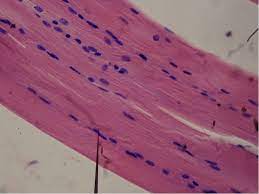
Smooth Muscle
Fibers are thin and taperes; no striations; single nuclei; involuntary; found in organs

Skeletal Muscle
multinucleated; striated; voluntary; attaches to the skeleton
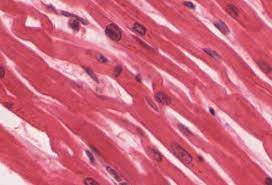
Cardiac Muscle
striated; single nucleus; thick chunky ribbon shaped cells